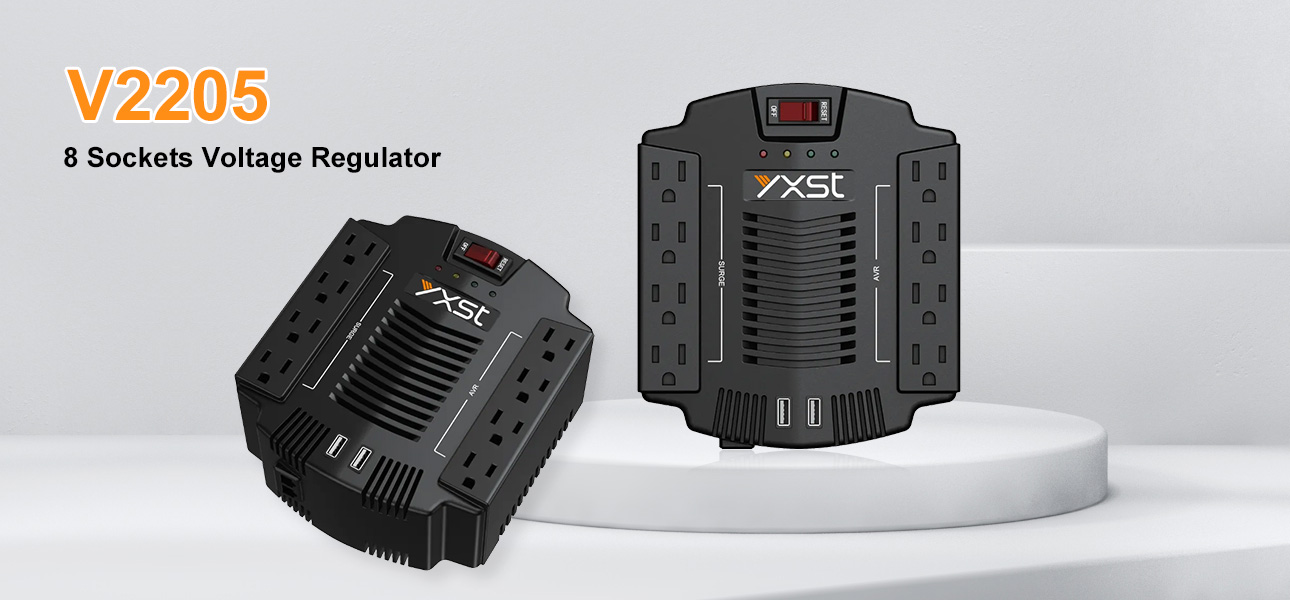As a device that can automatically adjust voltage, household voltage regulator can help us solve the problems caused by voltage fluctuations. So, is it really necessary to buy a fully automatic voltage regulator? This article will analyze from the following aspects. Do you need an automatic home voltage regulator? Signs of voltage regulator damage and precautions for use.

Do you need an automatic voltage regulator?
An automatic voltage regulator (AVR) is very necessary to buy in many cases.
The main function of the automatic voltage regulator is to ensure that electrical equipment can work properly under various voltage conditions by monitoring and controlling the voltage, avoiding damage caused by voltage fluctuations. It monitors the grid voltage and automatically adjusts the input and output voltages to keep it within a stable range when the grid voltage fluctuates. This function is widely used in home, industrial, commercial, and other fields, especially for some equipment with high voltage stability requirements, such as medical equipment, laboratory instruments, etc., which is indispensable. In addition, the automatic voltage regulator also has certain safety features, such as an overload protection function, which can automatically cut off the power supply when the load is too large to ensure the safety of equipment and personnel.
However, the automatic voltage regulator is not without disadvantages. It is relatively expensive, installation and maintenance are complicated, and additional countermeasures may be required in extreme weather conditions. Therefore, when purchasing an automatic voltage regulator, you need to weigh it according to your actual needs and budget.
In general, an automatic voltage regulator is a must-have in many situations, especially in environments where power stability is a concern. It ensures safe operation of electrical equipment, protects equipment from voltage fluctuations, and provides a certain level of safety. Despite some drawbacks, purchasing an automatic voltage regulator is generally a wise choice given the long-term benefits and safety improvements it brings.

What are the signs of a damaged home voltage regulator?
Signs of a damaged home voltage regulator include abnormal voltage, reduced charging capacity, and open circuits.
Abnormal voltage:
The field effect tube or Darlington tube inside the regulator is broken down, causing the excitation current to run out of control, which in turn causes the generator output voltage to increase or decrease abnormally. This may cause the battery to overcharge or fail to charge the battery properly.
Reduced charging capacity:
A damaged generator will cause the output voltage to decrease and fail to charge the battery properly. This is manifested by the charging indicator light, indicating that the battery is undercharged, which may be caused by a faulty electronic regulator.
Open circuit:
If the field effect tube or Darlington tube is damaged in an open circuit, the generator excitation winding lead will be grounded, causing circuit abnormalities.
This needs to be judged by checking whether the generator excitation winding leads are connected normally. In addition, if the electronic regulator is damaged, it may cause excessive power generation, thereby reducing the battery voltage. When the voltage drops below 10 volts, the engine may show symptoms such as shaking, difficulty starting, lack of acceleration, or flameout.
Therefore, timely detection and treatment of voltage regulator failures are essential to ensure the normal operation of household appliances.
When using a household voltage regulator, you need to pay attention to the following points to ensure its safe and efficient operation: Make sure the rated load meets the needs:
When purchasing a household voltage regulator, choose a suitable rated power according to the power of the electrical equipment that needs to be connected at home. When connecting electrical equipment, be careful not to exceed the rated power of the voltage regulator.
Maintain good ventilation:
When installing a household voltage regulator, ensure that there is enough ventilation space between the device and the power socket, and do not block the air vents to maintain the heat dissipation effect of the device.
Avoid overload:
Try to avoid connecting multiple high-power electrical devices at the same time to avoid exceeding the rated load of the voltage regulator and causing overload damage to the voltage regulator.
Regular inspection:
Regularly check the working status of the home voltage regulator to see if there is any abnormal noise, odor, or heating. If any abnormality is found, stop using it immediately and consult a professional for repair.
Keep it clean:
During use, the surface dust of the home voltage regulator should be cleaned regularly to prevent dust from entering the inside of the device and affecting the heat dissipation effect of the voltage regulator, thereby affecting its normal operation.
Avoid long-term overload work:
Try to avoid using it in a high-temperature and humid environment to avoid affecting the performance and life of the voltage regulator.
Proper installation:
Before installing the power regulator, some preparation work is required, such as determining the installation location, checking the specifications and parameters of the power regulator, cutting off the power supply and ensuring safety, etc.
Monitoring the operating status:
Once the power regulator is started, its operating status should be monitored to understand whether it is working properly by observing the indicator light or display. If any abnormality is found, stop using it immediately and check it.
In short, the correct use and maintenance of the home voltage regulator is the key to ensuring the stable operation of electrical equipment and extending its life. Following the above precautions can effectively improve the use effect and safety of the home voltage regulator.




